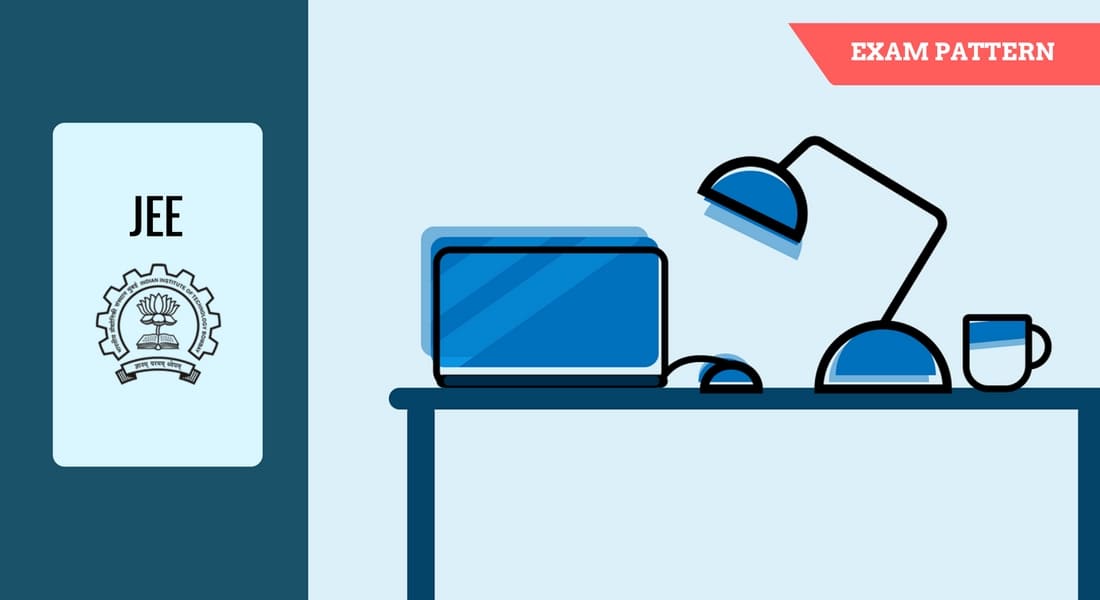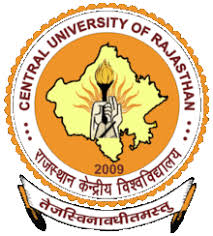Syllabus
The syllabus for the entrance examination will be consist of various topics from the related previous academic syllabus. The CUCET Syllabus for UG courses will be consist of various topics from the 11th and 12th academic syllabus and for PG courses, the syllabus will be consisting of the academic syllabus of related undergraduate syllabus.Some of the major topics that need to be covered under CUCET 2022 are English, Reasoning, General Aptitude, Analytical Skills, Numerical Aptitude/Data Interpretation, General Knowledge subjects/topics, and other topics.
Reservation Criteria
CUCET Eligibility: Reservation
As CUCET is an entrance exam for admissions to Undergraduate courses at the Central Universities, which have been established under an Act of the Parliament, each Central University must follow the norms set by the Government of India, with respect to intake and reservation of seats.
Generally, the following break-up is followed:
| Category | Reservation |
| Scheduled Castes | 15% |
| Scheduled Tribes | 7.5% |
| Other Backward Classes (Non-Creamy) | 27% |
| Persons with Disability | 5% |
Some institutions might even have provisions for the Economically Weaker Sections, which can account for 10% of the total seats. These EWS seats are carved out from the Open Category.
To avail of the reservation benefit based on caste (or any other category as specified), a candidate must be able to produce valid documents/certificates to support such claims.
Exam Information & Centers
List of all the test centres for CUCET 2022
A list of all the prospective cities where the CUCET 2022 will most likely be held is given below for your reference. Any additions or deductions from this list will be made in accordance with the official list of CUCET exam centres 2022 once it has been released.
| State | Cities |
| Arunachal Pradesh | Itanagar/Naharalagun |
| Andhra Pradesh | Visakhapatnam |
| Vizianagaram | |
| Vijayawada | |
| Nellore | |
| Kakinada | |
| Chirala | |
| Rajahmundry | |
| Tirupati | |
| Guntur | |
| Kurnool | |
| Anantapur | |
| Assam | Silchar |
| Tezpur | |
| Dibrugarh | |
| Jorhat | |
| Guwahati | |
| Bihar | Arrah |
| Samastipur | |
| Purnia | |
| Patna | |
| Muzaffarpur | |
| Gaya | |
| Bhagalpur | |
| Darbhanga | |
| Chattisgarh | Bilaspur |
| Bhilai Nagar/Durg | |
| Raipur | |
| Chandigarh | Chandigarh/Mohali |
| Delhi | Delhi/New Delhi |
| Gujarat | Vadodara |
| Surat | |
| Rajkot | |
| Mehsana | |
| Godhra | |
| Gandhinagar | |
| Vapi/Valsad | |
| Anand | |
| Ahmedabad/Gandhinagar | |
| Panji | Panji/Madgaon |
| Haryana | Ambala |
| Faridabad | |
| Gurugram | |
| Karnal | |
| Kurukshetra | |
| Hissar | |
| Himachal Pradesh | Solan |
| Kangra/Palampur | |
| Shimla | |
| Hamirpur | |
| Jammu and Kashmir | Srinagar |
| Samba | |
| Rajouri | |
| Jammu | |
| Pulwama | |
| Baramulla | |
| Jharkhand | Hazaribagh |
| Bokaro Steel City | |
| Dhanbad | |
| Jamshedpur | |
| Ranchi | |
| Karnataka | Dharwad/Hubballi |
| Shimoga | |
| Mysore | |
| Mandya | |
| Mangalore | |
| Kalaburagi / Gulbarga | |
| Udupi/Manipal | |
| Davanagere | |
| Bidar | |
| Bellary | |
| Belagavi | |
| Bangalore | |
| Kerala | Malappuram |
| Thrissur | |
| Ernakulam/Angamaly/Moovattupuzha | |
| Thiruvananthapuram | |
| Palakkad | |
| Kollam | |
| Kozhikode (Calicut) | |
| Kottayam | |
| Kochi | |
| Kasargod | |
| Kannur (Thalassery) | |
| Madhya Pradesh | Bhopal |
| Gwalior | |
| Satna | |
| Ujjain | |
| Indore | |
| Jabalpur | |
| Meghalaya | Shillong |
| Manipur | Imphal |
| Maharashtra | Mumbai/Navi Mumbai |
| Amravati | |
| Aurangabad | |
| Nashik | |
| Nagpur | |
| Pune | |
| Mizoram | Aizawl |
| Nagaland | Kohima |
| Leh and Ladhak | Leh |
| Odisha | Angul |
| Berhampur/Ganjam | |
| Bhubaneshwar | |
| Cuttack | |
| Kendujhar | |
| Dhenkanal | |
| Rourkela | |
| Sambalpur | |
| Punjab | Jalandhar |
| Ludhiana | |
| Patiala/Fatehgarh Sahib | |
| Bathinda | |
| Amritsar | |
| Rajasthan | Bikaner |
| Jaipur | |
| Jodhpur | |
| Alwar | |
| Ajmer | |
| Kota | |
| Sikar | |
| Udaipur | |
| Tamil Nadu | Chennai |
| Coimbatore | |
| Cuddalore | |
| Madurai | |
| Nagercoil/Kanyakumari | |
| Tiruchirappalli (Trichy) | |
| Tirunelveli | |
| Salem | |
| Telangana | Hyderabad/Secundarabad/Ranga Reddy |
| Karimnagar | |
| Mahbubnagar | |
| Khammam | |
| Warangal | |
| Tripura | Agartala |
| Uttar Pradesh | Agra |
| Gorakhpur | |
| Lucknow | |
| Meerut | |
| Muzaffarnagar | |
| Noida/Greater Noida | |
| Ghaziabad | |
| Aligarh | |
| Bareilly | |
| Kanpur | |
| Moradabad | |
| Prayagraj (Allahabad) | |
| Varanasi | |
| Uttarakhand | Dehradun |
| Haldwani | |
| Roorkee | |
| West Bengal | Asansol |
| Kalyani | |
| Hooghly | |
| Kolkata | |
| Siliguri | |
| Andaman & Nicobar | Port Blair |
Frequently Asked Questions
CUCET 2022 Frequently Asked Questions - FAQs
Question 1. What is CUCET 2022?
Ans. The Central Universities Common Entrance Test (CUCET 2022) will be held for admission to Integrated/Undergraduate (UI) programmes and Post-Graduate (PG) programmes in around 54 central universities (as planned).Through this national level test, students may apply for admission to participating central universities (PU) across the country through a single window.
Question 2. Which universities are participating in CUCET 2022?
Ans. Previously CUCET had 12 participating universities, but now authorities have planned to include around 54 central universities under the ambit of CUCET. Out of the 54, DU and JNU have confirmed admissions through CUCET in 2022. Hence, admissions to JNU and DU will be conducted on the basis of CUCET 2022.
JEE Advance 2017 Syllabus & Brochure

Brochure
JEE Advanced Pattern

JEE Advanced Exam Pattern 2017
SCHEME OF EXAMINATION -Only candidates who have cleared JEE Mains are only eligible to sit for JEE Advanced.
-
JEE Advanced comprises of a written examination and counselling based on the written examination results
- Number of Papers: JEE Advanced 2017 will be conducted as two exams : Paper 1 and Paper 2 each of three hours duration. Both the papers are compulsory.
- Questions Type: The question papers consist of objective type (multiple choice and numerical answer type) questions designed to test comprehension, reasoning and analytical ability of candidates.
- Sections/Subjects: Each question paper consists of three separate sections, viz., Physics, Chemistry and Mathematics.
- Number of Questions
- Time Allotted
- Maximum Marks
- Marking Scheme: Negative marks will be awarded for incorrect answers .
The candidates must carefully read and adhere to the detailed instructions given in the question paper.
ANSWER SHEET INSTRUCTIONS - Optical Response Sheet (ORS) -The answer sheet of each paper of JEE (Advanced) is a machine‐readable ORS. Please note the following key points about ORS sheets.
- The ORS has two pages with the same lay‐out. The first page of the ORS is machine readable. It is designed so as to leave impressions of the responses on the second page.
- Candidates should not separate or disturb the alignment of the two pages of the ORS at any stage and under any circumstance.
- The answers to all the questions should be marked on the first page of the ORS by darkening the appropriate bubble or bubbles (as per the instructions given in the question paper.
- Candidates should use BLACK BALL POINT pen for darkening the bubbles.
- Candidates should apply adequate pressure to ensure that a proper impression is made on the second page of the ORS. Other instructions for darkening the bubbles will be printed on the question paper and candidates must strictly adhere to these instructions.
- The second page of the ORS will be handed over to the candidates by the invigilator at the end of the examination.
- The question paper will be in either English or Hindi. Candidates must exercise the choice of question paper language while registering for JEE (Advanced) . Change of question paper language will NOT be entertained after the registration.
- Candidates using the services of a scribe will get one hour compensatory time.
CoachingSelect is here to help in case you need any more information [email protected].


